Introduction
Genetic companies using new advances in genetic engineering are working to achieve high-persistence brown and white egg layer hybrids capable of producing more than 500 eggs in a 100-week lay and molt-free period.
1-The quality of the shell is the main reason for a producer to discard a flock of layer.
2-The posture drop is the second.
- The most important nutritional strategy is bone health during rearing and all production through the contribution of high quality calcium carbonate (caco3) and the use of the metabolite 25-OH-D3 throughout the productive life and the use of minerals organic to strengthen the function of the medullary bone in the formation of the egg shell.
Fine calcium Thick calcium Monodicalcium Phosphate
Organic Mineral (carbo- amino-phospho-chelates)
-Studies show that minerals in the inorganic form present low metabolism and, consequently, result in an unsatisfactory performance in the diet of animals. However, organic minerals have high bioavailability that optimizes the absorption of essential trace minerals for most physiological processes.
- Chelated trace minerals do not go through a dissociation process in the acid pH of the gizzard or the intestine, remaining neutral and protected from chemical reactions with phytases and other compounds present in the gut.
- Chelated trace minerals are absorbed through a different mechanism than inorganic minerals, being transported by peptide or amino acid uptake systems.Whenever there is an episode of high occurrence of eggshell defects, low fertility, poor hatchability, deficient nutrition, digestive problems or stress, chelated trace minerals are much more effective to solve the problem in a quick way.
-The liver provides several components of the egg, liver health is very important we must use high quality mycotoxin binder, fats and oils and monitor liver diseases: hepatitis, fatty liver hemorrhagic syndrome ( FLHS),Fatty liver syndrome (hepatic steatosis).
Fatty Liver Hemorrhagic Syndrome (FLHS) Fatty Liver Syndrome (FLS)
Source: Hy line technical update
VIRAL INCLUSION BODY HEPATITIS
Source: the poultry site: avian diseases
Supplement with:
- 25-OH-D3
- Choline
- Inositol
- B12 vitamin
- Folic acid
They have been shown to limit the incidence of hepatic steatosis and FLHS in layers (Bouvarel and Nys, 2014).
-Aflatoxin, Ochratoxin, Fumonisin, T-2 Toxin, Zearalenone (binds with vitamin D), Diacetoxyscirpenol (DAS), Monoacetoxyscirpenol (MAS), Triacetoxyscirpenol (TAS), Scirpentriol (STO), affect production and quality of the eggshell in layers.
Optimal rearing is essential, obtaining the target weights and uniformity at: 5 and 16 weeks, monitoring the consumption of feed, water, the degree of meatiness (Fleshing) or condition of the breast and the deposition of fat.
Egg size control: to guarantee the quality of the shell, the ideal is to maintain an egg weight between 60-65gr throughout the production stage, the level of crude protein, methionine, methionine + cysteine and linoleic acid (level of added fat).
Intestinal health: in a long period of posture, maintaining intestinal health is vital by applying phytogenic additives (organic acids and essential oils) we can maintain a good absorption and metabolism of nutrients, especially calcium, phosphorus and microminerals. Also the use of enzymes (phytases, protease, xylanases, amylases and beta-glucanases-pectinases), functional fibers (insoluble fiber: cellulose, hemicellulose and lignin ) improve the health of the intestine.
Keys in raising layers:
• Precision beak trimming.
• Weekly weight and uniformity.
• Health status.
• Weight at 5 weeks (minimum 320 g), uniformity >80%
-Weight at 5 weeks influences weight at the end of rearing.
• Weight at 16 weeks (minimum 1130 g), uniformity >85%, according to sexual maturity.
-Layers with good muscle development are better able to sustain high egg production.
Source: Hendrix Genetics, Paul Grignon Dumoulin, 2019.
Hy line w80, management guide, 2019.
-Medullary bones are an important source of calcium when hens are laying eggs. Eggshells primarily are made of calcium, and a hen's body mobilizes 47 percent of its body calcium to make an eggshell.
-Calcium really works in the body of a laying hen. When calcium is absorbed through a hen's diet, it is stored in the medullary cavity, which is located in the bones. When the creation of an eggshell calls for more calcium, the nutrient is released into the bloodstream.
-Estrogen is crucial for medullary bone development.
Source: Martin Johnsson, The Roslin Institute & Swedish University,2012.
Hy line w80, management guide, 2019.
IDEAL PROTEIN PROFILE IN COMMERCIAL LAYERS.
- A supply of amino acids without deficit or excess, with a minimum level of protein and that guarantees a high and prolonged production of eggs is the goal of modern layers (Table 2.).
- The daily nutrient intake of a layer depends on many factors (Temperature, handling, health, water consumption, mycotoxins, etc.), Table 3.
- Birds do not have a crude protein requirement, they only need an amount that ensures a nitrogen reserve amount for the synthesis of non-essential amino acids (Dr Douglas Zaviezo, 2012).
- The inclusion of L-valine and L-isoleucine 5th and 6th essential amino acids allow us to reduce crude protein levels, without affecting zootechnical parameters and reducing nitrogen excretion to the environment.
Brazilian table for poultry and swine, 2017.
Hy line W80 Recommended Daily Nutrient Intake
Hy line w80, management guide, 2019.
Hy line w80, management guide, 2019.
Hy line w80, management guide, 2019.
Feed granulometry:
- Coarse particles improve production.
- Coarse particles larger gizzard size.
- Large particle sizes reduce the rate of passage of feed through the gizzard, which increases the time of exposure to digestive enzymes, and results in better digestibility of nutrients.
- My recommendations are: 800 µm in the rearing and 1200 to 1500 in feed production in meal.
FEED OPTIMAL FEED PARTICLE PROFILES:
Hy-line W80, Management guide, 2019.
Calcium Particle Size:
Hy-line W80, Management guide, 2019.
- The appropriate particle size depends on the solubility of limestone.
- Dietary calcium levels may need to be adjusted based on limestone solubility.
- Limestone dark in color is geologically older, containing more impurities (typically magnesium,plaster,marble) and is generally lower in solubility and calcium availability
Hy line w80, management guide, 2019.
Calcium metabolism
Source: Plus vet animal health
Calcium metabolism during heat stress - respiratory alkalosis
Source: Plus vet animal health
Phosphorus is present at a low level in the shell, but it is important for replenishing the medullary bone. So there must be enough phosphorus available in the diet to assimilate calcium into the bone matrix. The mobilization of calcium from the bone is not efficient and it must be reduced to a minimum, ensuring a greater proportion of the supply of calcium from dietary origin. The coarse limestone particles guarantee the absorption of calcium from the food during the night. These measures preserve the medullary bone and reduce the demand for dietary phosphorus. The minimum recommended levels of calcium and phosphorus intake are shown in the following table 4. Consult the Manuals for the specific levels of other micro and macro nutrients. The recommendations serve as a reference, but the level of production should also be considered. Birds that produce a number of eggs above the standards will have a higher calcium requirement for shell formation, therefore the concentration in the diet should be adjusted. Additionally, the source of calcium must be considered since limestone varies in solubility and therefore in availability to the bird according to its source of origin.
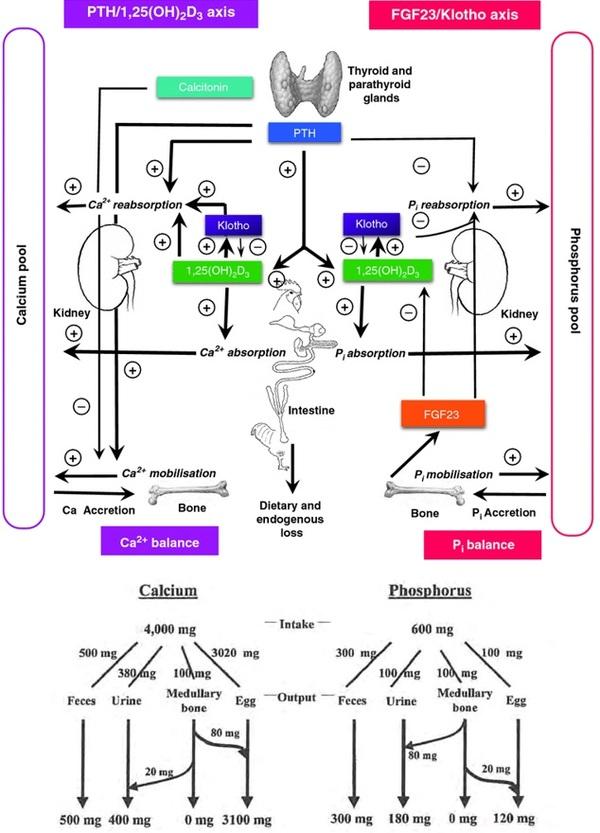
Formation of the shell will depend on the rate and amount of calcium that is absorbed from the digestive content during the deposition of the shell, 25-40% of the calcium in the shell is provided by the medullary bone, (Whitehead, 2004). With an adequate supply of dietary calcium, the bird will be able to replenish and maintain the calcium content of the medullary bone during periods when no shell formation occurs. If the source of calcium in the diet is not sufficient then calcium will be mobilized from the cortical bone to meet the appropriate levels for shell formation. A prolonged deficiency will result in soft bones (osteoporosis or cage fatigue) and eventually egg production will drop or when there is an acute deficiency, production may stop altogether.
The capacity for the deposition or excretion of calcium from the uterus is 100-150 mg / hour that is 1.67 to 2.5 mg / minute.
Ingestion, excretion and retention of calcium and phosphorus in laying hens:
Analyzing the ingestion, metabolism and excretion of calcium and phosphorus, a Hy-line w80 layer at the peak of production and consuming 95 g / day of feed containing 3.95 % of calcium and 0.48 % of available phosphorus:
A) Calcium intake = 95 * 3.95 % * 1000 = 3752.5 mg / day.
- Lost in stool as indigestible = 500 mg
- Excretion in urine = 400 mg
- Returned to bone reserves (medullary bone) = 100 mg
- 2852.5 mg of calcium are available, of these 2000 mg go to the shell and 852.5 to the formation of the yolk and white (albumin).
B) Phosphorus intake = 95 * 0.48 % * 1000 = 456 mg / day
- Loss in stool as indigestible = 257.5 mg
- Excretion in urine = 154.5 mg
- Available for the eggshell = 44 mg
Calcium retention is affected by age, ambient temperature, and the metabolizable energy content of the diet (Scott and Balnave, 1991).
In a soy-corn diet, the retention of Calcium varies from 50-55% and that of available phosphorus is less than 30% (Li and Bryden, 2006).
Unless the bird enters a molting period and its estrogen levels drop, the skeletal bone will not be able to replenish calcium. The quality of the shell cannot be maintained for long without adequate levels of calcium, phosphorus and vitamin D in the diet of the layer. Other micronutrients such as magnesium, iron, copper, manganese, zinc, vitamin K, and certain amino acids are involved in calcium transport and transfer to the bone matrix. Even some B complex vitamins (Folic Acid, Niacin, and B12) have been associated with positive effects on the quality of the eggshell.
Summary of the endocrine control of the principle components of egg formation.
Source: British Poultry Science, 2016,
Vitamin D3
Vitamin D3 is an important vitamin involved in calcium metabolism in both liver and kidney and hence significantly affects egg shell quality. Vitamin D3 is required for normal calcium absorption. An inadequate amount of dietary Vitamin D3 quickly induces calcium deficiency and a drop in egg shell weight, resulting in weaker and thinner shells.
A minimum dosage of 3,300 IU/kg of Vitamin D3 in laying hen feeds is recommended for egg production, shell quality. Under field challenge circumstances involving liver or kidney integrity, some commercial Vitamin D (25-OH-D3) metabolites have proven to promote increased calcium retention in the bird and improve shell quality.
Aviagen, Alex Chang, 2021.
- As the egg shell mostly contains CaCO3, it is normally assumed that calcium is the only nutrient responsible for shell quality. However, both phosphorus and Vitamin D3 are also involved. Together with a number of trace minerals. Gut health status and kidney function play important roles in calcium absorption and Vitamin D3 activity
Vitamin D is essential for the absorption and mobilization of Calcium during the formation of the eggshell and the utilization of phosphorus.
Vitamin D3 is absorbed from the intestine in association with fats and requires the presence of bile salts for absorption. It is transported through the portal circulation of the liver, where it accumulates. The first transformation occurs in the liver, where vitamin D3 is hydroxylated to become 25-hydroxyvitamin D3 (25-OH-D3).
This metabolite of vitamin D3 is then transported to the kidney where it is converted into the more active hormonal compound 1,25-dihydroxyvitamin D3 (1,25- (OH) 2D3). 1,25- (OH) 2D3 production is tightly regulated by parathyroid hormone (PTH) in response to serum calcium. Vitamin D3 is the main control element in stimulating the absorption of Calcium from the intestine. This process is facilitated by the synthesis of the calcium-binding protein. If plasma calcium is low (hypocalcemia), PTH secretion is induced, which stimulates the hydroxylation of 25-OH D3 to 1,25- (OH) 2D3. This compound will increase the absorption of calcium in the intestine, mobilize calcium from the bones (medullary bone) and reduce the excretion of calcium through the kidney. If plasma calcium is high (hypercalcemia), PTH secretion is induced and then 1,25- (OH) 2 D3 is suppressed, resulting in reduced absorption of Calcium in the intestine, as well as reabsorption of the bones and an increase in the excretion of Calcium. Therefore, it is important for optimal eggshell quality to optimize the supply of Calcium and Vitamin D3 in the laying hen. Any problem that affects the integrity of the liver and kidney or the parathyroid gland will have an adverse effect on the action of vitamin D3 and on the absorption and metabolism of calcium.
Eggshell Quality:
-Composition of an eggshell:
- Water = 1.6%
- Calcium carbonate (caco3) = 93.6%
- Tricalcium phosphate = 0.73%
- Magnesium Carbonate = 0.80%
- Organic Matter = 3.3%
Source: Arias et al, 1991.
-The quality of the eggshell remains the main issue
This is a multifactorial problem that has deep roots in early layer nutrition. The main problem is that when the hen ages it tends to produce large eggs, it cannot deposit more calcium, ending up producing an increasingly thin eggshell. To make matters worse, the efficiency with which she absorbs calcium from her diet is greatly diminished. It is only by controlling the size of the egg, preserving and even increasing the absorption capacity of calcium and controlling the actual levels of calcium in the diet that this problem can be addressed.
-In my opinion, the digestive system of laying hens ages and deteriorates with age and the absorption of minerals and other nutrients decreases and worsens with poor intestinal health, the challenge of mycotoxins and poor quality fats and oils.
-Calcium homeotasis is also affected with age, increasing bone porosity (osteoporosis, cage fatigue), decreasing the flow and deposit of calcium ions in the egg shell through the uterus.
-Laying hens lose their structural bone during the late laying period (Masayoshi Yamada, Chongxiao Chen, Toshie Sugiyama and Woo Kyun Kim).
AVIAN REPRODUCTIVE SYSTEM – FEMALE
Hy line the science of egg quality,2016.
Structure of the eggshell
Hy line the science of egg quality,2016.
-The egg shell membrane is mainly made up of type x collagen, which is a fiber-forming protein.
-Shell percentage can be used to estimate the eggshell quality (Mertens et al., 2006).
ENSURING GOOD EGG QUALITY:
Disease Control Proper disease diagnosis and good vaccination programs are important to minimize the infectious disease incidence in a flock. Infectious Bronchitis and Egg Drop Syndrome have already been mentioned as diseases that can have significant impact on shell quality. Other diseases that could affect shell appearance include Newcastle Disease and Avian Influenza. Stress from any disease can indirectly result in loss of egg quality.
Nutrition:
Shell strength is determined by the calcium metabolism of the hen which is a dynamic flow of calcium from the feed and bone to the uterus. There is a demand of 2–2.5 grams of calcium per egg produced, almost regardless of egg size. This calcium requirement must be principally supplied by the feed, but the hen may also mobilize calcium from medullary bone reserves to form the eggshell. Medullary bone acts as a readily available reservoir of calcium if required during shell formation. The quantity of calcium contributed to the eggshell from these bone reserves will depend on the rate and quantity of calcium absorbed from the digestive contents during shell deposition. When adequate calcium is supplied by the diet, the bird will replenish and maintain the medullary bone calcium content during periods when no shell formation is occurring. If dietary calcium supply is inadequate, then calcium will be mobilized from cortical bone to meet the required levels for proper shell formation. Continued calcium deficiency will result in the appearance of soft bones and eventually a drop in production, or in acute deficiency, the bird will stop laying.
Shell quality cannot be maintained for long without adequate levels of calcium, phosphorus and Vitamin D in the layer diet. Other micronutrients including Magnesium, Iron, Copper, Manganese, Zinc, Vitamin K and certain amino acids function in calcium transport and bone matrix turnover. Even some B vitamins (Folic acid, Niacin, B12) have been associated with positive effects on shell quality.
Dietary electrolyte balance is also an important consideration for shell quality as it can influence the mineralization of the shell. High levels of dietary chloride should generally be avoided. Replacing a proportion of the sodium from salt with sodium from sodium bicarbonate or sodium carbonate sources has been shown to have positive impact on shell quality.
Vitamin D is essential for the intestinal absorption of calcium and phosphorus. Phosphorus is present at a low level in the eggshell, but is important for replenishing the medullary bone. So there must be sufficient.
phosphorous available from the diet to assimilate the calcium into the bone matrix. The mobilization of calcium from bone is inefficient and should be minimized by supplying calcium mostly from dietary sources. Late afternoon feedings, midnight feedings and coarse limestone particle size extend calcium absorption from feed into the night time period. These measures preserve medullary bone and lower the demand for dietary phosphorus.
Nutrition for Good Eggshell Quality
Eggshell quality importance of zinc and manganese:
- Trace minerals are important in the metabolism of the animals as catalytic agents of all metabolic reactions. They are key for growth, development and productivity.
- Zinc and manganese, as cofactors of enzymes involved in the synthesis of the eggshell, play an important role in egg quality.
- Manganese is a cofactor of the enzymes glycosyltransferase and alkaline phosphatase, which are involved in the synthesis of polysaccharides and proteins during the formation of the matrix.
- A deficiency of manganese leads to depigmentation defects in the shell, speckled eggs, mottled shells, thin and fragile shells, shell-less eggs and eggs with a more rounded shape.
- The eggshell consists of 95% of calcium carbonate. Calcium is obtained from skeletal mobilization (medullary bone) or from the diet, while the carbonate is obtained from blood. Carbonic anhydrase is the enzyme that produces carbonate from water and carbon dioxide in blood. Zinc is a cofactor of the enzyme carbonic anhydrase.
- A lack of zinc in layer and breeder diets can lead to lower levels of carbonic anhydrase, resulting in shell defects, especially a higher occurrence of broken eggs and pigmentation defects.
- The activity of carbonic anhydrase is reduced during episodes of heat stress and when drinking water is very saline. In these cases, an extra supplementation of zinc, preferably in organic form, is necessary to maintain good eggshell quality.
- The eggshell is made of mineral crystals which are stabilized by a matrix made of 70% proteins and 11% polysaccharides. The matrix is necessary for the correct deposition of calcium carbonate and other minerals during the eggshell formation.
- Manganese is a cofactor of the enzymes glycosyltransferase and alkaline phosphatase, which are involved in the synthesis of polysaccharides and proteins during the formation of the matrix.
-A deficiency of manganese leads to depigmentation defects in the shell, speckled eggs, mottled shells, thin and fragile shells, shell-less eggs and eggs with a more rounded shape.
The diseases that can affect the quality of the shell are:
- Viral: Inferior bronchitis, low posture syndrome, Newcastle and avian influenza, inferno laryngotracheitis.
- Bacterial: M. synoviae, oophoritis (salmonella sp), salpingitis (E. coli).
- Parasites: coccidia and worms
They cause damage to the consistency of the shell by different mechanisms:
- By localized uterine edema, limiting the contact of the shell in formation with the carbonate deposit.
- By altering the cilia of the oviduct, altering the rotation of the egg.
- Decreasing the absorption of nutrients in the intestine.
- Heat stress also affects shell quality, flocks that suffer from heat stress often lay eggs with weak and thin shells due to acid/base imbalance in the blood resulting in panting (hyperventilation). When the bird gasps to lose body heat there is an excessive loss of CO2 in the blood. When the CO2 in the blood drops, the pH rises or becomes more alkaline. Higher blood pH reduces the amount of calcium and carbonate ions that are transported to the uterus to form a shell. An increase in the amount of calcium in the food does not correct this problem. Reduced feed intake due to heat stress also contributes to weak shells. The electrolyte balance in the diet also plays an important role in the quality of the shell, particularly during periods of heat stress. The concentration of chloride in the diet must be carefully balanced in relation to sodium and potassium and even reduced during hot periods. We can expect some additional benefits with the use of sources of bicarbonate (HCO3).
- The electrolyte balance in the diet is also considered important for the quality of the shell, since it can influence its mineralization. High levels of chlorine in the diet should generally be avoided. Replacing a proportion of the sodium in salt with sodium from sodium bicarbonate or sodium carbonate sources (it is recommended to replace 30% of the salt with sodium bicarbonate) has been shown to have a positive impact on quality. of the shell. ). The best results are obtained with Electrolyte Balance BE that vary between 220 to 250 meq/kg with an optimum of 240.
CONCLUSIONS:
Proper rearing is the first tool to achieve a good long persistence of 25 weeks or more above 90% lay.
The quality of the shell depends on three organs: liver, medullary bone and the uterus or vagina.
Calcium provided for the formation of the shell: Feed 1500 to 2000 mg and medullary bone between 500-800 mg.
Monitor and analyze the quality, solubility and digestibility of the calcium source is of utmost importance to achieve 500 eggs in 100 weeks of laying.
Applying the concept of precision nutrition, it is not necessary to use the fractional feeding system or Split feeding system or the application of supplemental calcium in the afternoon, or night feeding.
The application of 25-OH-D3 throughout the productive life of the layers ensures good bone health and quality of the eggshell.
Intestinal health through the application of phytogenic additives and functional fiber improves the absorption of essential nutrients for the quality of the shell.
Understanding calcium metabolism during the shell formation process is of utmost importance when designing a diet for laying hens.
Water quality and the electrolyte balance of the diet is vital for a good quality of the shell.
Increasing the pH of sodium bicarbonate adversely affects key proteolytic enzymes. Pepsinogen requires a low gastric pH to convert to pepsin and pepsin in turn has its optimal activity at pH 2 and stops working above pH 6.5. Second, any commercial acidifiers added to the diet will be effectively neutralized by up to 30% by sodium bicarbonate. I suggest replacing the sodium bicarbonate with a specifically formulated source of sodium formate. Commonly used as an acidulant, sodium formate is also a highly available source of sodium that is as effective as baking soda.

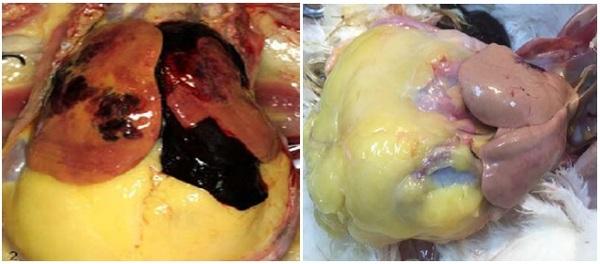
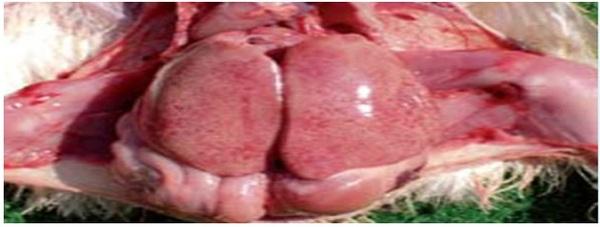
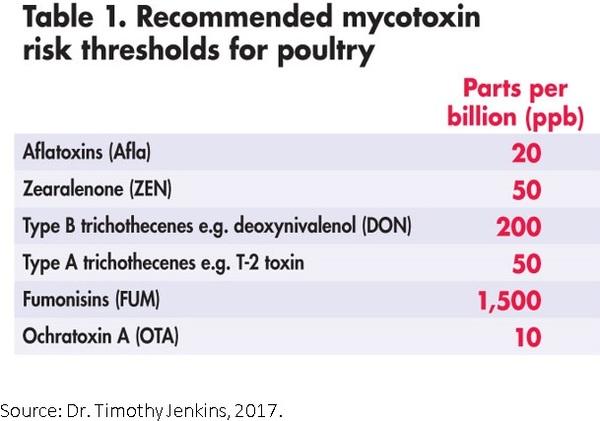
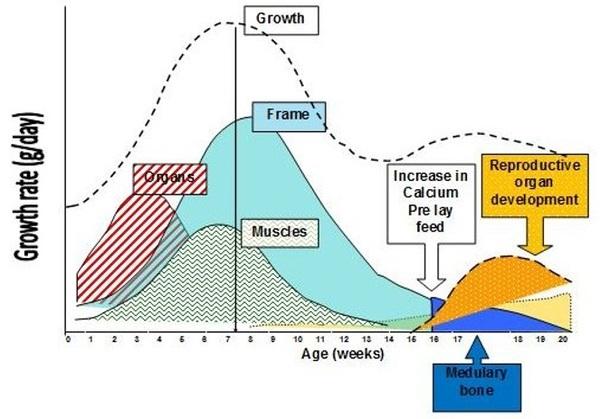





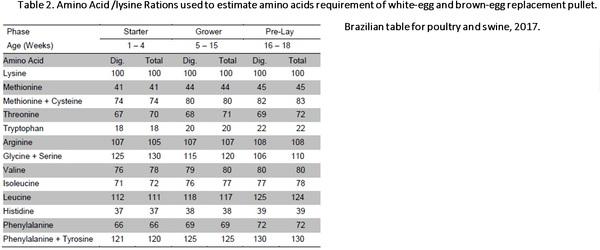
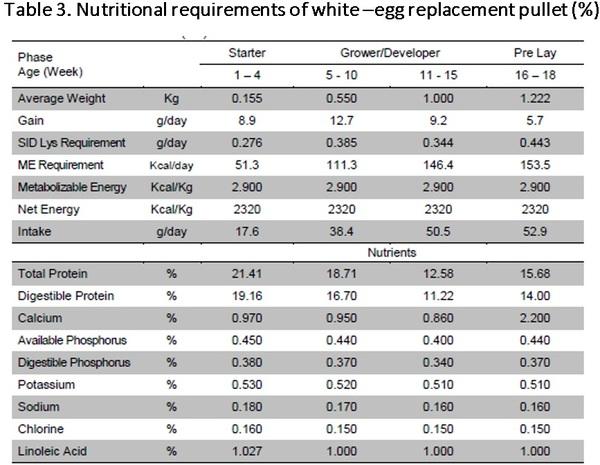
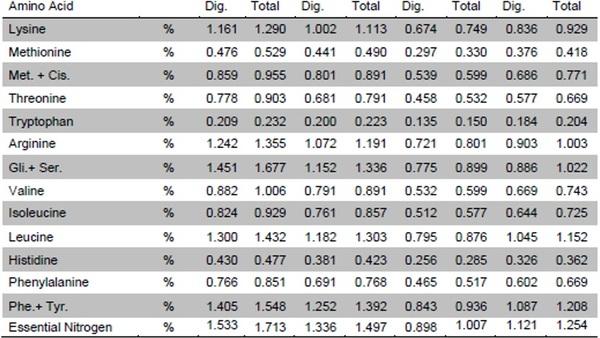
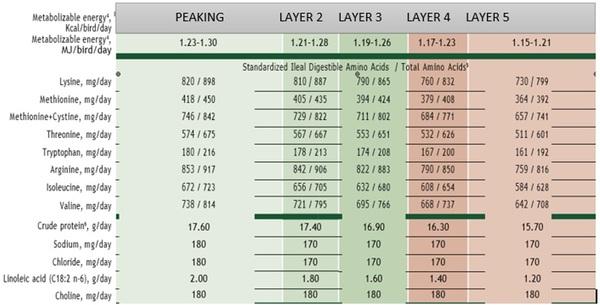

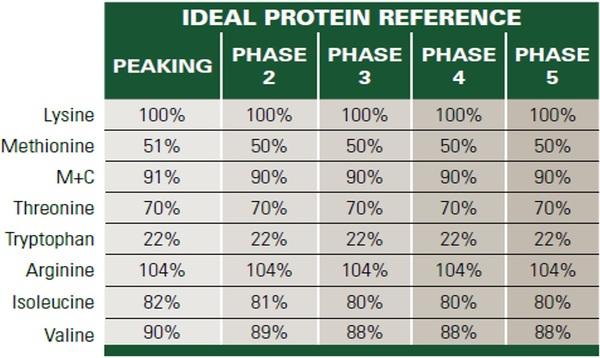




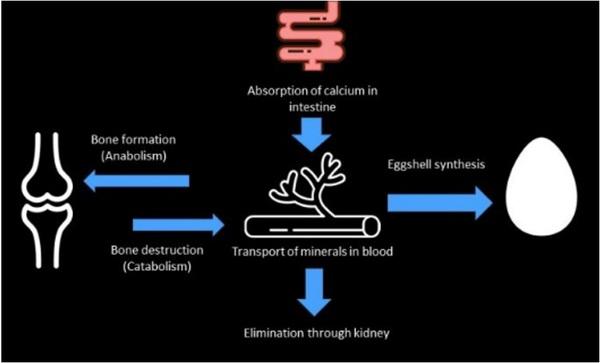

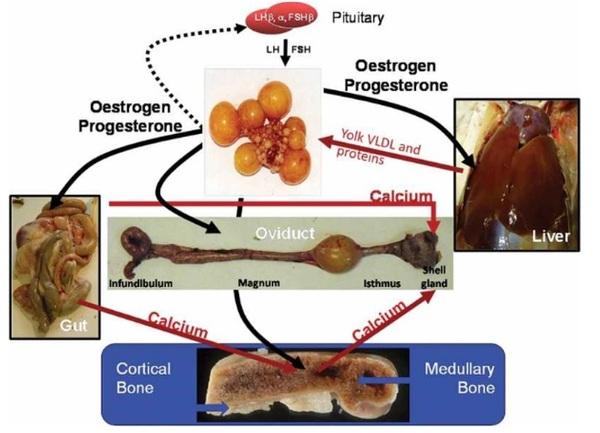
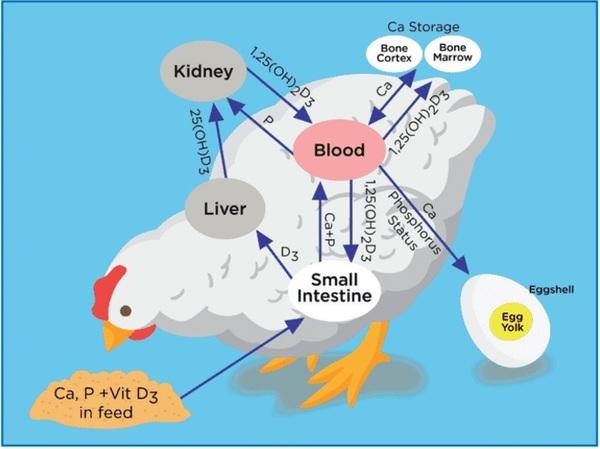
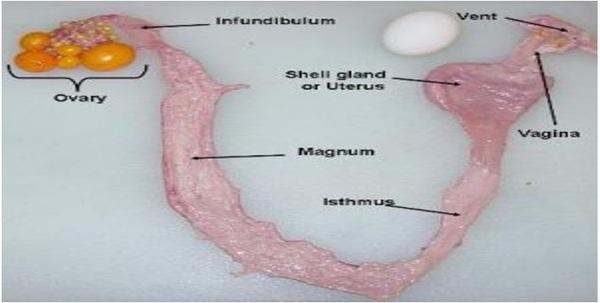
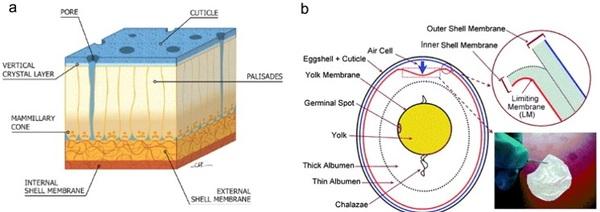
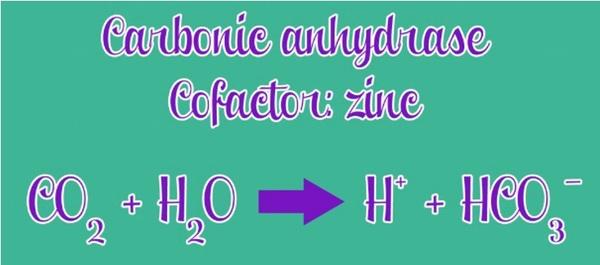
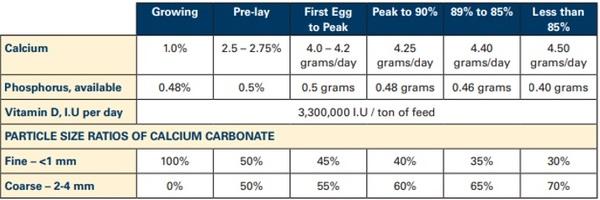











.jpg&w=3840&q=75)